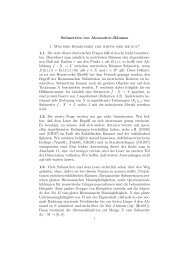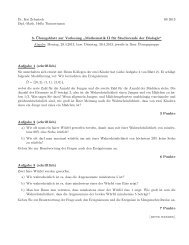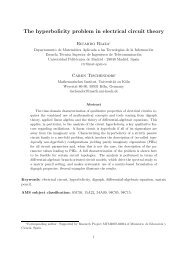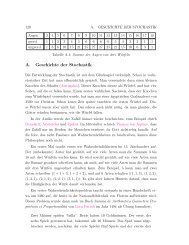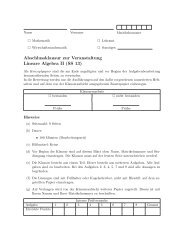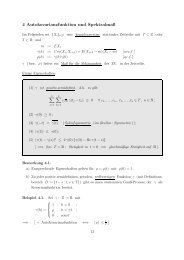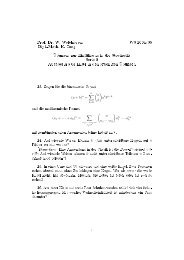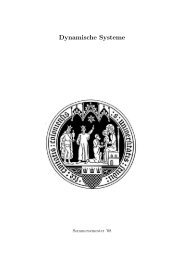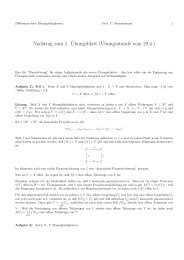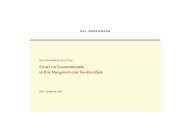Inhaltsverzeichnis - Mathematisches Institut der Universität zu Köln
Inhaltsverzeichnis - Mathematisches Institut der Universität zu Köln
Inhaltsverzeichnis - Mathematisches Institut der Universität zu Köln
You also want an ePaper? Increase the reach of your titles
YUMPU automatically turns print PDFs into web optimized ePapers that Google loves.
DMV Tagung 2011 - <strong>Köln</strong>, 19. - 22. September<br />
Lutz Mattner, Frauke Mattner<br />
<strong>Universität</strong> Trier, Kliniken <strong>der</strong> Stadt <strong>Köln</strong><br />
On the statistical comparison of diagnostic tests using joint test results<br />
We consi<strong>der</strong> the common problem of estimating or comparing sensitivities or specificities of (dichotomous)<br />
diagnostic tests, with the available data consisting of joint test results from the whole population, without<br />
true state determinations. Assuming the plausible latent class model of Gart and Buck (1966), it is well<br />
known that interesting inferences are possible only un<strong>der</strong> not always plausible additional assumptions,<br />
most notoriously the one of conditional independence of results of different tests given the true state,<br />
as discussed and criticized in, for example, the book of Pepe (2003). We suggest to impose additional<br />
assumptions only if they are plausible in a given application, even if this leads to nonidentifiability of the<br />
parameters of interest and hence to, say, only upper confidence bounds instead of two-sided confidence<br />
intervals.<br />
A detailed example in the talk will be the case of two diagnostic tests with the second at least as<br />
specific as the first. An application where this specificity assumption seems plausible is the comparison<br />
of two competing tests for diagnosing toxigenic Clostridium difficile from stool samples, applying an<br />
enzyme-immuno-assay either directly or after culturing (possibly nontoxigenic) Clostridium difficile. We<br />
<strong>der</strong>ive confidence bounds good enough to refute the direct test.<br />
The talk will be aimed at mathematicians without prior knowledge of diagnostic tests.<br />
Dietmar Pfeifer<br />
Karl von Ossietzky <strong>Universität</strong> Oldenburg<br />
Bernstein-Copulas: wie man den ’Fluch <strong>der</strong> Dimension’ umgeht<br />
Der Modellierung und Simulation von stochastischen Abhängigkeiten versicherungstechnischer Risiken<br />
kommt insbeson<strong>der</strong>e im Licht von Solvency II eine wachsende Bedeutung <strong>zu</strong>. Für die Konzeption<br />
und Implementierung interner Risikomodelle ist sie praktisch unverzichtbar. In dem Vortrag wird eine<br />
Möglichkeit auf <strong>der</strong> Basis von Bernstein- und an<strong>der</strong>en konstruktiven Copula-Ansätzen vorgestellt, die<br />
insbeson<strong>der</strong>e das Problem des ’Fluchs <strong>der</strong> Dimension’ umgehen. In dem Vortrag wird auch ein konkretes<br />
Anwendungsbeispiel vorgestellt.<br />
88




